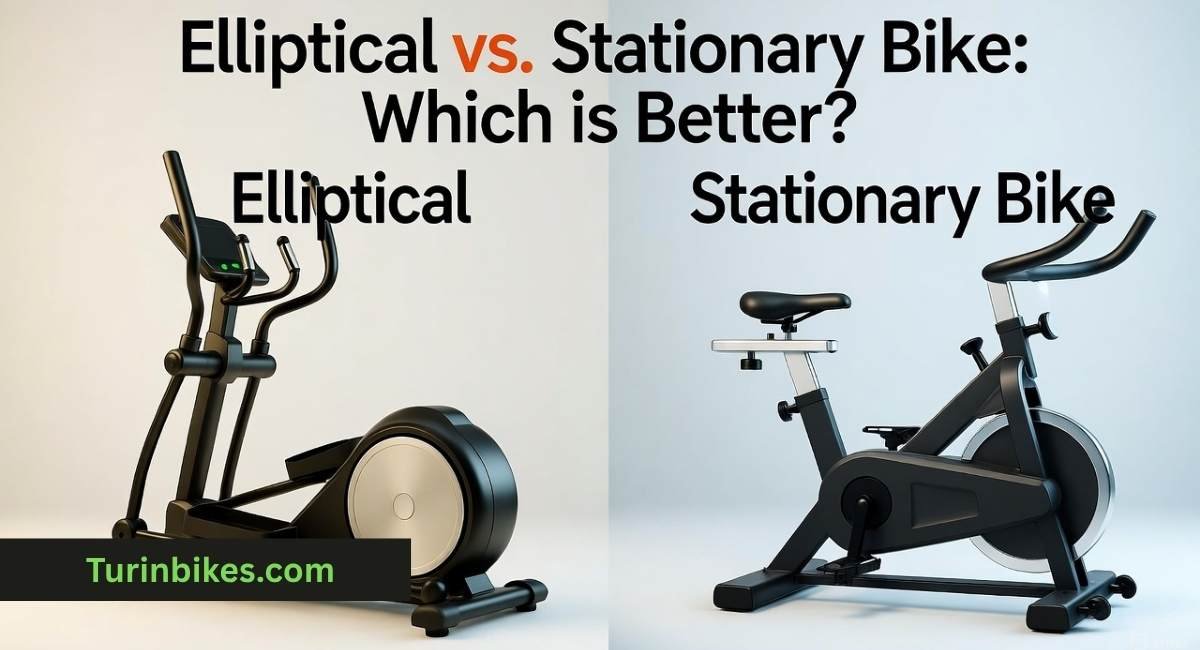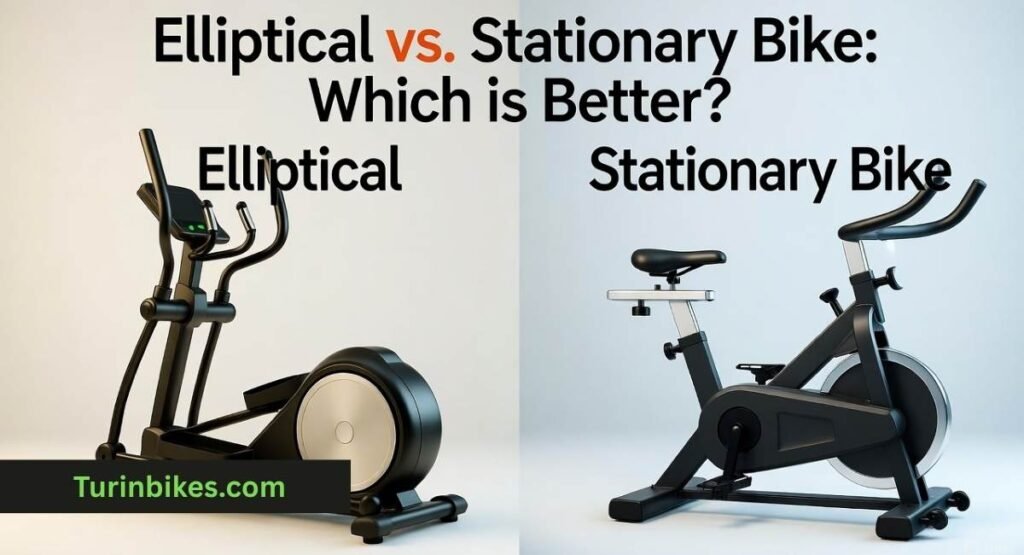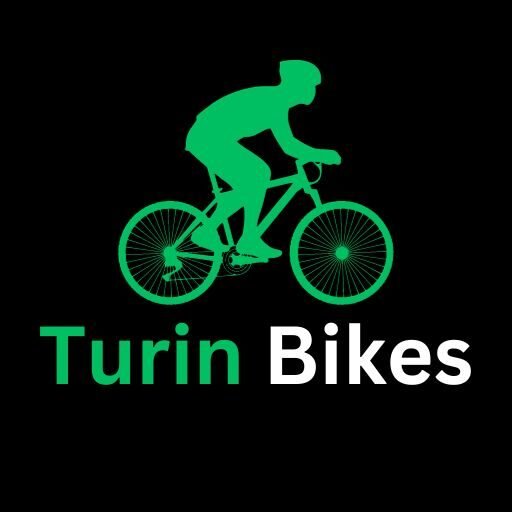
Trying to choose between an elliptical or stationary bike for your home workouts? Both are excellent indoor cardio options, but they feel very different, work your body differently, and fit different budgets and spaces. This guide breaks down the meaning of “elliptical or stationary bike,” compares benefits, prices, features, brands, and sizing—and helps you decide which exercise bike is right for you.
Overview: What is an Elliptical Bike vs. a Stationary Bike?
- Elliptical bike (elliptical cross-trainer)
- A standing, low-impact machine with pedals that move in an oval/elliptical path.
- Dual handlebars let you push/pull with your upper body while your lower body “glides,” reducing joint impact.
- Often chosen for full-body cardio and gentle-on-the-knees training.
- Stationary bike
- A seated cycling machine. Main styles:
- Upright bike: compact, more like a city bike.
- Indoor cycle (spin bike): aggressive road-bike posture, heavy flywheel for high-intensity intervals.
- Recumbent bike: reclined seat with backrest, easiest on the back and hips.
- Focuses the work on the legs and cardiovascular system.
- A seated cycling machine. Main styles:
Key differences in feel and impact
- Muscle engagement: Ellipticals hit glutes/hamstrings/quads and, with moving arms, chest/back/shoulders. Stationary bikes target quads/hamstrings/glutes/calves—upper body involvement is optional.
- Joint impact: Both are low-impact; ellipticals are weight‑bearing without the pounding. Recumbent bikes are the gentlest seated option.
- Intensity: Indoor cycles excel at HIIT and power-based training; ellipticals can also deliver intense intervals, but feel more “smooth” than “spin.”
If you’re comparing an upright elliptical or stationary bike vs a recumbent elliptical or stationary bike, note: “recumbent ellipticals” exist but are rare—most recumbents are bikes. Ellipticals are almost always used standing.

Benefits of Elliptical Bikes
- Low-impact, joint-friendly
- Great for users with knee, hip, or ankle sensitivity. The guided pedal path minimizes impact and shear forces.
- Full-body cardio
- Moving handlebars add upper-body work and increase calorie burn compared with a bike at the same perceived effort.
- Weight loss and endurance
- Easy to maintain a steady heart rate in the fat‑burn and aerobic zones; excellent for longer, low-impact sessions.
- Variety and comfort
- Reverse pedaling recruits different muscles; incline (on some models) emphasizes glutes/hamstrings.
- Good for cross-training runners with less pounding.
- Home and commercial options
- From compact home units to commercial elliptical or stationary bike lines used in gyms. Brands such as Aerofit, Sole Fitness, and Domyos (Decathlon) offer a wide range.
Keywords: benefits elliptical bike, aerofit elliptical or stationary bike, commercial elliptical or stationary bike.
Benefits of Stationary Bikes
- Leg strength and power
- Bikes are great for building quad/glute strength and VO2 max with controllable resistance and cadence.
- Highly scalable intensity
- Indoor cycles are ideal for HIIT; upright and recumbent bikes support gentle rehab to tough workouts.
- Space-saving and often more affordable
- Upright and foldable bikes take less floor space and typically cost less than comparable ellipticals.
- Comfort options
- Recumbent models support the lower back and are excellent for longer rides, seniors, or anyone easing into cardio.
Keywords: benefits stationary bike, price elliptical or stationary bike, foldable elliptical or stationary bike.
Price Comparison and Budget Options
Indicative India-focused ranges (actual prices vary by model/specs/promos):
- Stationary bikes
- Basic upright/foldable: ~₹7,000–₹18,000
- Indoor cycle (spin): ~₹15,000–₹60,000+
- Recumbent: ~₹20,000–₹70,000+
- Ellipticals (cross-trainers)
- Entry home units: ~₹18,000–₹45,000
- Mid-range: ~₹45,000–₹90,000
- Commercial-grade: ₹1,00,000–₹3,00,000+
Elliptical or stationary bike under 10000 INR?
- Realistically: basic upright/foldable bikes and mini steppers may fit under ₹10k. True ellipticals at this price are rare and often have very short stride lengths and light frames; test before buying.
Brands to consider in India
- Decathlon (Domyos), Afton, Aerofit, Sole Fitness, Cockatoo, PowerMax Fitness, Flexnest, Cult.Sport.
- Tip: For the best price elliptical or stationary bike deals, compare brand websites with marketplaces (Amazon, Flipkart) and local retailers.
Keywords: price elliptical or stationary bike, buy elliptical or stationary bike, elliptical or stationary bike under 10000.
Where to Buy: Online and Offline Options
- Online elliptical or stationary bike
- Decathlon India, brand sites (Afton, Aerofit, Sole, Cockatoo, PowerMax, Flexnest), Amazon, Flipkart.
- Check delivery, installation, return window, and warranty registration.
- Offline/nearby
- Decathlon stores, specialty fitness retailers, brand showrooms. Ask for a demo to get the right fit—especially critical for ellipticals (stride length) and indoor cycles (reach/stack).
- Search “elliptical or stationary bike nearby” and call ahead to confirm floor models.
Buying tips
- Always test the stride smoothness on an elliptical and seat adjustability on a bike.
- Confirm service network availability in your city and spare-part support for at least 3–5 years.
- Check weight capacity (often 100–150 kg) and warranty (frame, parts, electronics).
Keywords: buy elliptical or stationary bike, online elliptical or stationary bike, elliptical or stationary bike nearby.
Reviews and Brand Comparisons
Here’s a snapshot of how popular brands stack up (based on typical user feedback and specs; check current reviews for specific models):
- Aerofit
- Pros: Broad range from budget to semi‑commercial; decent value; available service in many Indian cities.
- Cons: Consoles are basic on entry units; check stride length on ellipticals.
- Sole Fitness
- Pros: Sturdy frames, smooth drive systems, good ergonomics (e.g., E25/E35 ellipticals, SB/RC bikes); strong warranties; commercial‑leaning quality.
- Cons: Higher price; heavy units require solid floor space.
- Flexnest
- Pros: Smart indoor cycles with connected classes/content; compact footprints; modern design.
- Cons: Subscription for full experience; fewer elliptical options.
- Decathlon (Domyos)
- Pros: Good value, transparent specs, widespread stores for trials and service; balanced options for home users.
- Cons: Mid‑range features; power-based training options limited on some models.
- Afton (and partners)
- Pros: Distributes multiple brands; commercial elliptical or stationary bike options; service networks in metros.
- Cons: Pricing varies; confirm after‑sales commitments.
- Cockatoo / PowerMax / Cult.Sport
- Pros: Aggressive pricing; lots of choice in upright/spin categories; some foldable models.
- Cons: Build quality and QC can vary—read reviews; verify warranty handling.
Keywords: reviews elliptical or stationary bike, brand elliptical or stationary bike, commercial elliptical or stationary bike.
Space and Size Considerations
- Ellipticals
- Dimensions: roughly 150–180 cm long x 60–80 cm wide (5–6 ft x 2–3 ft).
- Ceiling height: user height + 30–40 cm (12–16 in) clearance is a common rule of thumb.
- Heavier and harder to move. Foldable ellipticals exist but are uncommon; compact “rear‑drive” designs save space.
- Stationary bikes
- Footprint: roughly 100–130 cm long x 50–60 cm wide (3.5–4.5 ft x 2 ft).
- Foldable upright bikes can slip into closets; indoor cycles require a mat and a bit more room for out‑of‑saddle work.
Keywords: size elliptical or stationary bike, dimensions elliptical or stationary bike, foldable elliptical or stationary bike.
Additional Features to Consider
- Resistance systems
- Magnetic (manual or motorized): quiet, low maintenance (common on both).
- Electromagnetic/eddy current: precise, smooth, often on mid/high‑end bikes and ellipticals.
- Fan/air (on bikes): great for HIIT, louder.
- Drive and feel
- Ellipticals: stride length (16–20 in typical), stride height, ramp incline, and Q‑factor affect comfort.
- Bikes: belt vs chain drive, flywheel weight, adjustability (seat height/fore‑aft, handlebar reach).
- Consoles and connectivity
- Heart rate (grips/strap), cadence, speed, estimated calories; Bluetooth/ANT+ for apps (Zwift, Peloton, Kinomap, iFit, JRNY, brand apps like Flexnest).
- Preset programs and user profiles; power meters are common on higher‑end indoor cycles.
- Comfort and ergonomics
- Elliptical pedals with slight inward tilt reduce ankle/knee strain.
- Bikes with wider saddles (upright/recumbent) for comfort; SPD‑compatible pedals for serious cyclists.
Keywords: features elliptical or stationary bike, upright elliptical or stationary bike.
Quick Decision Guide
| If you want… | Choose… | Why |
|---|---|---|
| Full‑body, low‑impact cardio | Elliptical | Upper + lower body engagement; easy on joints |
| Compact, budget‑friendly training | Stationary bike (upright/foldable) | Smaller footprint, lower cost |
| HIIT and power-based workouts | Indoor cycle (spin) | Heavy flywheel, precise resistance, cycling posture |
| Gentle rehab/back support | Recumbent bike | Reclined seat, minimal joint load |
| Glute/ham emphasis without running | Elliptical with incline | Targets posterior chain |
| Quietest operation in apartments | Magnetic elliptical or belt‑drive bike | Low noise vs fan bikes |
Conclusion
Both machines can deliver excellent cardio and strength benefits. Choose an elliptical if you want full‑body, low‑impact workouts and have space for a larger machine. Pick a stationary bike if you prefer compact, budget‑friendly training with options ranging from gentle recumbent rides to high‑intensity indoor cycling. For best results, test models in-store, read up‑to‑date reviews, and compare warranties and service networks before you buy.
Ready to shop? Look for elliptical or stationary bike for sale from trusted brands like Decathlon (Domyos), Aerofit, Afton, Sole Fitness, Cockatoo, PowerMax, Flexnest—and match features to your goals and space. That’s the fastest route to the best elliptical or stationary bike for your needs. 🚴♀️
Want tailored picks? Share your budget, height, any joint concerns, and whether you prefer HIIT or steady-state—I’ll shortlist a few India-available models for you.
What is better for weight loss: elliptical or stationary bike?
The best tool is the one you’ll use consistently. At the same effort (heart-rate/RPE), calorie burn is comparable. Ellipticals may burn slightly more for some people due to upper‑body involvement. Indoor cycles shine for structured HIIT. Mix intervals and longer steady rides for results.
Can I use an elliptical or stationary bike for rehab or injury?
Often yes. Recumbent bikes are common in rehab for back/hip/knee issues. Ellipticals are joint-friendly and weight‑bearing. Always confirm with your physio/doctor—proper setup (seat height, pedal alignment) is critical.
How do I maintain my elliptical or stationary bike?
Wipe sweat after workouts; vacuum around flywheel/rails; keep the machine level on a mat.
Lubricate slide rails (elliptical) or seat posts (bike) as recommended; check belt/chain tension annually.
Tighten bolts monthly; calibrate resistance if your console supports it.
Update firmware and keep apps current for connected models.
Meet Sachin Kumar, an avid cyclist and bike enthusiast with a passion for two-wheeled adventures. At our Turinbikes site, Sachin shares expert insights, thrilling ride experiences, and tips for fellow bike lovers.






